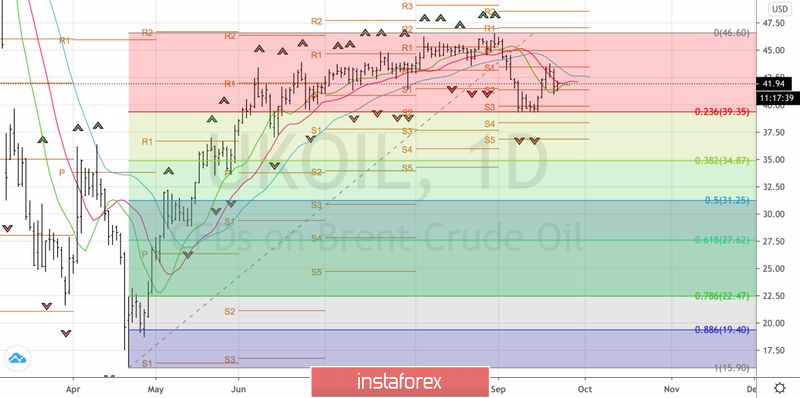Saudi Arabia's announcement that it intends to continue to protect the market pushed up the quotes of major crude grades by 10%, however, the vague prospects for global demand due to the second wave of the pandemic in Europe allowed the bears on Brent and WTI to launch a counterattack. The roller coaster of black gold should not come as a surprise, because, according to Riyadh, the market will remain unstable, and one of the leading oil producers does not intend to disclose its plans.
Over the past four months, the over-fulfillment of Saudi Arabia's obligations to reduce production has allowed OPEC+ to increase the percentage of implementation of the plan to 98%. If not for the activity of Riyadh, the indicator would have fallen to a less impressive 93%. Nevertheless, stricter requirements for those countries that did not fulfill their obligations, as well as lower export prices in order to maintain their market share, forced the bulls on Brent and WTI to loosen their grip.
Fulfillment of obligations to reduce production by OPEC + countries:

The good news for fans of black gold is that contango, the spread between spot prices and 3-month North sea futures, has been reduced from $1.8 to $1.35 per barrel over the course of the week. This indicates that the market will not be as saturated in the near future as previously expected. In addition, support for the bulls for Brent and WTI is provided by information about the growing number of bankruptcies of oil companies in the USA. According to Haynes and Boone, another 16 corporations failed in August, the same number as in July. Rystad Energy estimates that if the Texas grade remains at its current level near $40 per barrel, the number of bankruptcies will increase to 190 by the end of 2022. The same number was in the five years to 2019. The difficult situation for US producers limits their ability to increase production, which is a bullish factor for oil.
Meanwhile, bearish sentiments for Brent and WTI are growing in order to develop a correction. Sellers for black gold found refuge in the increase in production in Libya from the current 90,000 b / d to 310,000 b / d. Goldman Sachs believes that the country is able to increase the figure to 500,000 b/d. In addition to this is the reduction in Chinese demand as prices rise. Tankers going to China carry 7.7 million b/d in September compared to 14.1 million b/d in May. The second wave of COVID-19 in Europe also added to this.
The pandemic has made the process of forecasting global demand incredibly difficult. Currently, monthly estimates of the indicator from the IEA and OPEC differ by 1.3 million b / d, which is twice as much as in 2019.
Thus, both buyers and sellers of oil have trump cards in their hands, which suggests an increase in the probability of forming a trading range of $39.5 - $43.5 per barrel for the North sea grade. Only the release of Brent quotes beyond its limits will clarify the medium-term prospects for black gold. At the same time, a clean breakdown on the resistance at $43.5 will be a signal to buy the analyzed asset, and a breakdown of support at $39.5 per barrel will open positions for selling.
Brent daily chart:






















